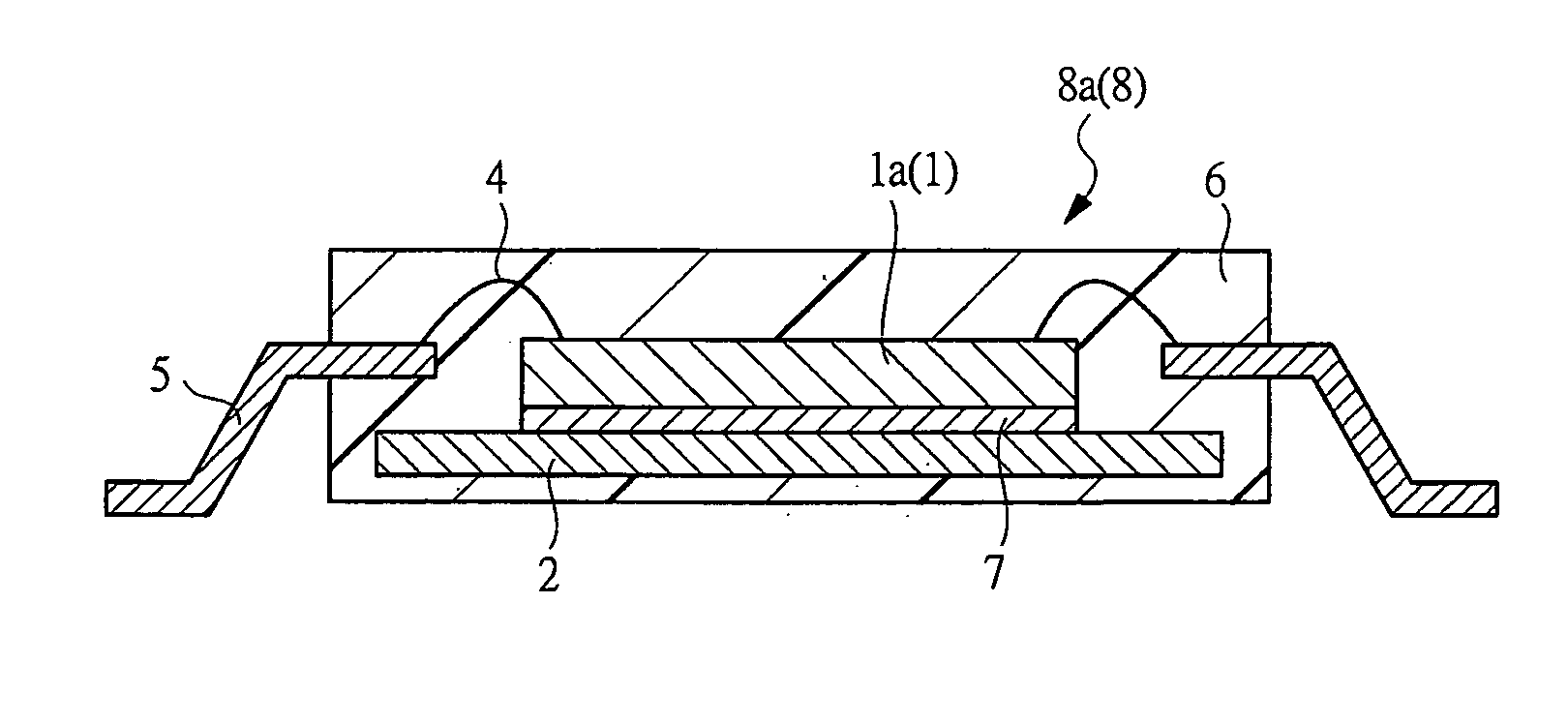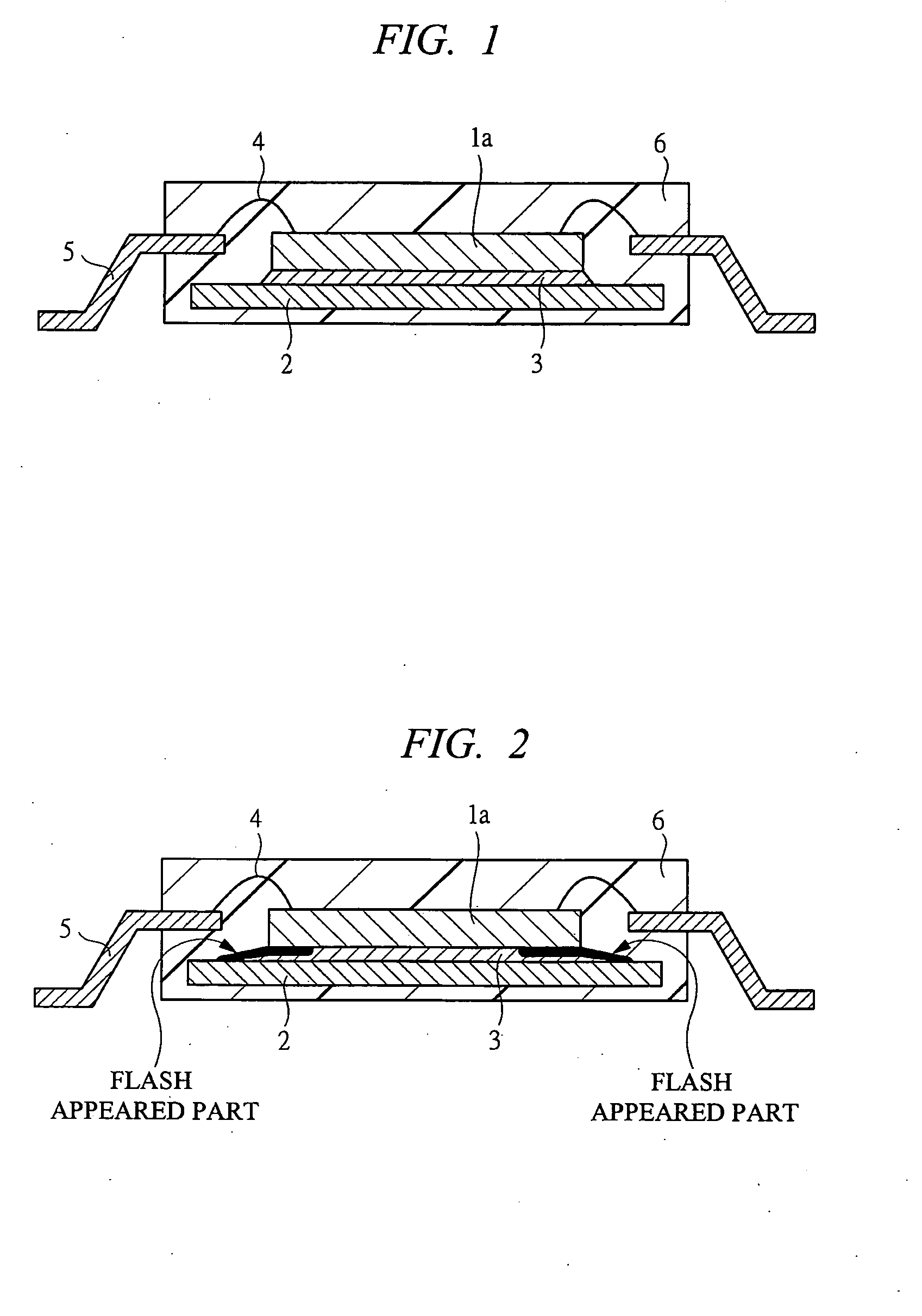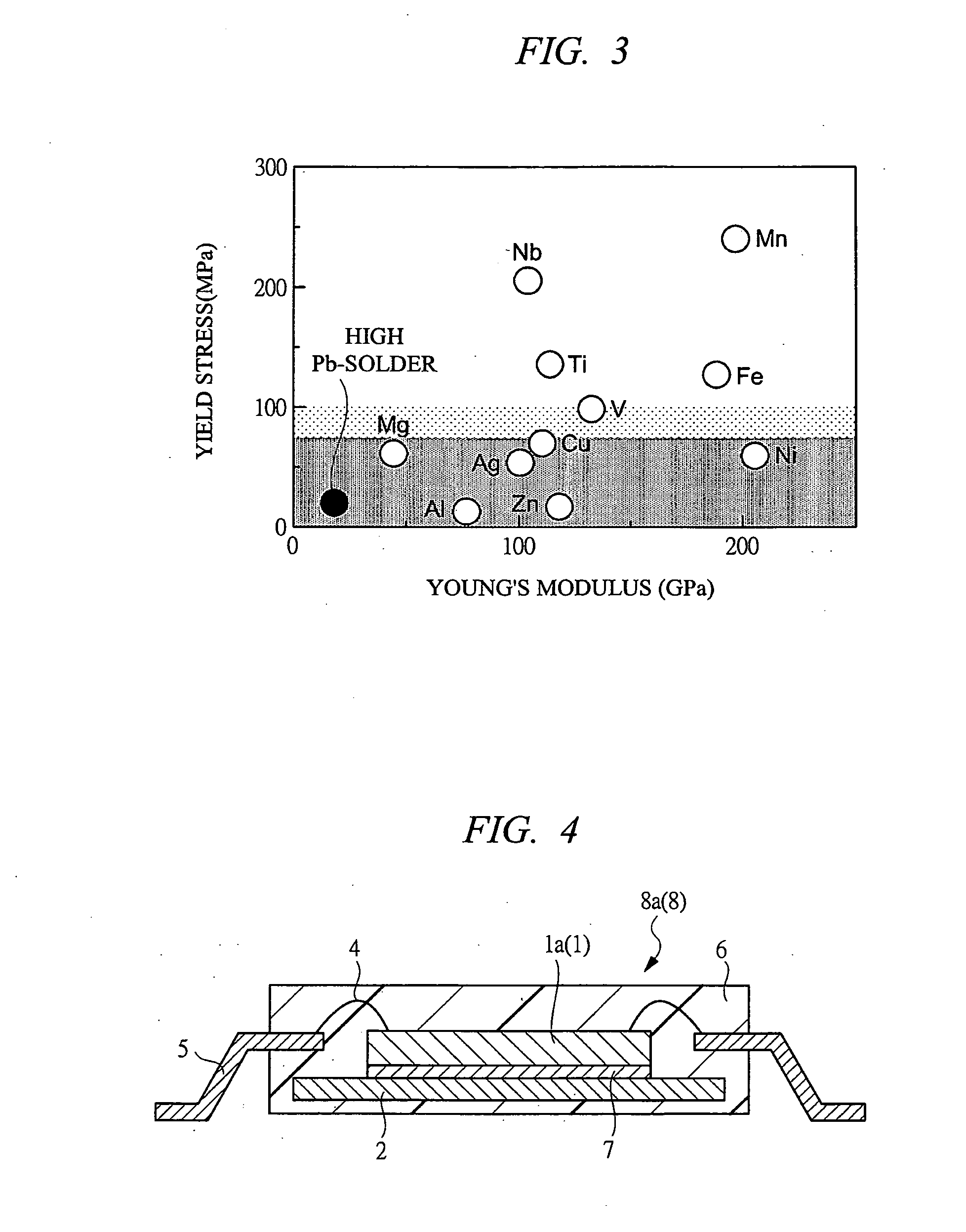Semiconductor Device And Production Method For Semiconductor Device
a semiconductor and production method technology, applied in the direction of semiconductor devices, semiconductor/solid-state device details, electrical apparatus, etc., can solve the problems of large chip load, rigid and brittle connection parts, and difficult to apply the above-described technologies to the die-mount connection part, etc., to achieve high connection reliability
- Summary
- Abstract
- Description
- Claims
- Application Information
AI Technical Summary
Benefits of technology
Problems solved by technology
Method used
Image
Examples
embodiment 1
[0100]FIG. 4 is a sectional view showing a semiconductor device 8 according to an embodiment of the present invention wherein the semiconductor device 8 comprising a power semiconductor device 8a and the like is manufactured in accordance with, for example, the following manufacturing processes.
[0101]That is, as shown in FIG. 4, the power semiconductor device 8a is obtained by die-mount-connecting a semiconductor element 1 as a power semiconductor element 1a onto a lead frame 2 through a metal joint section 7. To form the metal joint section 7, a composite foil 7a for forming the joint section shown in FIG. 5A is disposed on a die pad of the lead frame 2, and further the power semiconductor device 8a is disposed on the composite foil 7a and heated.
[0102]For instance, on the rear surface on the silicon (Si) side of the power semiconductor element 1a being in contact with the composite foil 7a, Ti / Ni / Au is metallized to assure the wettability. The lead frame 2 is, for example, made of...
embodiment 2
[0147]As is apparent from the above-described embodiment 1, such a construction which is not adversely affected, e.g. with appearance of cracks, by the rigid and brittle connection layer 200 and the side of the power semiconductor element 1a connected with the connection layer 200 may be obtained by the provision of the metal layer 100 wherein thermal stress is absorbed by the metal layer 100, even if the connection layer 200 comes to have a high melting point resulting in rigid and brittle characteristics.
[0148]In this connection, the present inventors get such an idea that when a Pb-free solder of a high melting point is used together with the metal layer 100, it becomes possible to use the Pb-free solder which could not have been used for the die-mount-connection because of occurrence of cracks by thermal stress on the chip side due to the rigid and brittle characteristics thereof although there is no fear of the remelting in the case of the reflow by making it to have a high mel...
embodiment 3
[0159]As is apparent from the above embodiment 1, such a construction which is not adversely affected, e.g. with appearance of cracks, by the rigid and brittle connection layer 200 and the side of the power semiconductor element 1a connected with the connection layer 200, may be obtained by the provision of the metal layer 100 wherein thermal stress is absorbed by the metal layer 100, even if the connection layer 200 comes to have a high melting point resulting in rigid and brittle characteristics.
[0160]In this connection, the present inventors get such an idea that when a Bi, a Bi—Ag alloy, a Bi—Cu alloy, or a Bi—Ag—Cu alloy-based solder is used together with the metal layer 100, it becomes possible to use any of these solders which could not have been used for the die-mount-connection because of occurrence of cracks by applying it thinly in spite of requiring the thin connection thereof due to its low thermal expansion coefficient of about 9 W / m·K, although there is no fear of the...
PUM
| Property | Measurement | Unit |
|---|---|---|
| melting point | aaaaa | aaaaa |
| yield stress | aaaaa | aaaaa |
| melting point | aaaaa | aaaaa |
Abstract
Description
Claims
Application Information
 Login to View More
Login to View More - R&D
- Intellectual Property
- Life Sciences
- Materials
- Tech Scout
- Unparalleled Data Quality
- Higher Quality Content
- 60% Fewer Hallucinations
Browse by: Latest US Patents, China's latest patents, Technical Efficacy Thesaurus, Application Domain, Technology Topic, Popular Technical Reports.
© 2025 PatSnap. All rights reserved.Legal|Privacy policy|Modern Slavery Act Transparency Statement|Sitemap|About US| Contact US: help@patsnap.com



